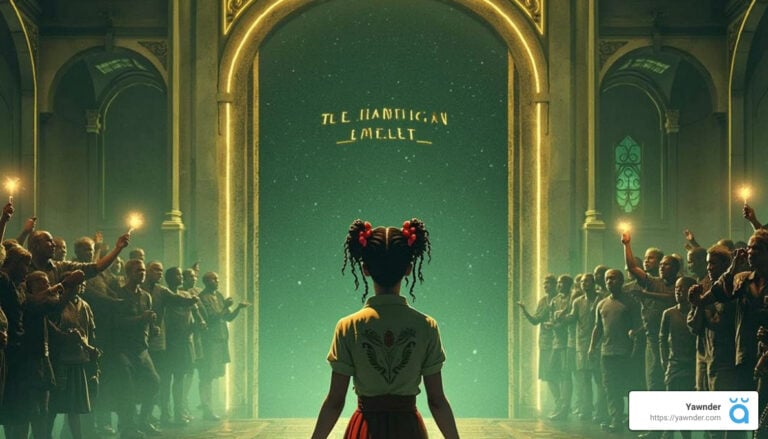The Complete Guide to Understanding the Mandela Effect
Opening the Mystery of the Mandela Effect
The Mandela Effect is a captivating phenomenon where large groups of people collectively misremember specific details or events. Unlike simple memory lapses, these shared false memories often involve intricate and vivid recollections that seem undeniably real, yet turn out to be incorrect.
For instance, many people firmly believe that Nelson Mandela died in prison during the 1980s. In reality, he was released in 1990, became South Africa’s president, and lived until 2013. Similarly, countless fans misquote famous movie lines or misremember logos, believing in details that never existed.
Picture this: you confidently insist that the Monopoly Man sports a monocle, only to discover that he never did. Or perhaps you’re certain you read about the Berenstein Bears as a child, when in fact the title was always Berenstain Bears. This captivating distortion of collective memory is the essence of the Mandela Effect.
Understanding the Mandela Effect
The Mandela Effect is not merely an oddity; it reveals significant insights into human memory and perception. It serves as a reminder that our memories are more malleable than we think. As I delve deeper into this intriguing topic, it’s vital to understand the mechanics behind these widespread false recollections.
I’m Ben Trapskin, your guide on this captivating journey through the complexities of memory. My own experiences, from struggling with sleep deprivation to becoming a sleep expert, have heightened my awareness of how our memories shape our understanding of reality. Grasping the Mandela Effect provides valuable insights into the intricacies and limitations of memory.
Origins of the Mandela Effect
The term Mandela Effect was first introduced by Fiona Broome, a paranormal researcher, in 2009. During a conference, she discovered that many others shared her false memory of Nelson Mandela dying in prison. This collective memory was so prevalent that Broome felt compelled to create a platform to explore such occurrences further, leading to the popularization of the term.
The Mandela Effect highlights not only the power of human memory but also the strange ways in which narratives can propagate through social interaction, further deepening the mystery surrounding our shared recollections.
Causes of the Mandela Effect
Understanding the Mandela Effect requires a look into psychology and cognition. Several factors contribute to this phenomenon, which can be categorized into psychological and cognitive mechanisms.
Psychological Mechanisms
1. False Memories: These are vivid recollections of events that never took place, or that are distorted versions of real occurrences. For example, many believe in a fictitious movie where Sinbad starred as a genie in Shazaam.
2. Suggestibility: Our memories can be easily swayed by suggestions from others. If someone confidently asserts that Mr. Monopoly wears a monocle, you might start to believe it’s true.
3. Misinformation Effect: When new but misleading information alters our recollections, the misinformation effect is at play. This can be seen across social media, where incorrect details spread rapidly.
4. Source Misattribution: We may recall a piece of information but forget where we encountered it. This can lead to remembering something inaccurately, like thinking Pikachu has a black-tipped tail when he does not.
5. Presuppositions: Preconceived notions can influence our memories. If you believe Mickey Mouse wears suspenders, this assumption might steer your memory in that direction.
Cognitive Factors
1. Memory Malleability: Our recollections are not permanent; they can morph over time, especially with repeated exposure to misinformation.
2. Priming: Exposure to certain stimuli can modify our responses. For instance, seeing characters with monocles may lead you to remember Mr. Monopoly wearing one.
3. Confabulation: This involves filling in gaps in memory with fabricated details that feel true. It explains why some think there’s a cornucopia in the Fruit of the Loom logo.
4. Fuzzy-Trace Theory: This theory posits we store both the gist and details of experiences. Over time, reliance on gist can result in memory errors, such as misquoting famous phrases.
By understanding these psychological and cognitive influences, we can unravel the complexities behind the Mandela Effect. Our brains, shaped by both internal and external factors, often lead us to collective distortions of reality.
Famous Examples of the Mandela Effect
The Mandela Effect captivates public curiosity with its array of bewildering examples. Here are a few notable cases that might make you think twice about your memories.
Visual Mandela Effect
– Mr. Monopoly’s Monocle: Contrary to popular belief, Mr. Monopoly, also known as Rich Uncle Pennybags, has never worn a monocle, illustrating a classic visual misremembering.
– Pikachu’s Tail: Fans often recall Pikachu having a black tip on his tail, yet it is entirely yellow in reality.
– C-3PO’s Silver Leg: Many remember C-3PO as purely golden, overlooking his silver leg from the original Star Wars trilogy.
– Fruit of the Loom Logo: Commonly thought to feature a cornucopia, the logo only displays fruits without that detail.
Pop Culture Misquotes
– Star Wars: Many quote Darth Vader with Luke, I am your father, while he actually says, No, I am your father.
– Casablanca: The famous line is often misremembered as Play it again, Sam, while the true line is Play it once, Sam.
– Risky Business: In Tom Cruise’s iconic scene, he dances without sunglasses, contrary to popular belief.
– Silence of the Lambs: People often think Lecter greets Clarice with Clarice, but he actually says, Good evening, Clarice.
These examples emphasize how easily our memories can diverge from reality, raising fascinating questions about the nature of recollection.
Conclusion
The Mandela Effect serves as a compelling reminder that our memories can be deceptive. As we explore the psychological and cognitive nuances behind our recollections, it’s vital to recognize the significance of consulting reliable sources for information. By approaching our memories with skepticism and seeking verification, we can navigate the intriguing landscape of the Mandela Effect and its implications in our daily lives.
At Yawnder, we prioritize accurate information, helping you understand topics like the Mandela Effect and more. Whether you’re searching for motivation or looking for the perfect mattress, we provide reliable content that fosters informed decisions, steering you toward a better night’s sleep and enhanced well-being.
In our dynamically evolving world, understanding the Mandela Effect encourages us to appreciate the complexity of human memory while reminding us to be vigilant about verifying facts.


















